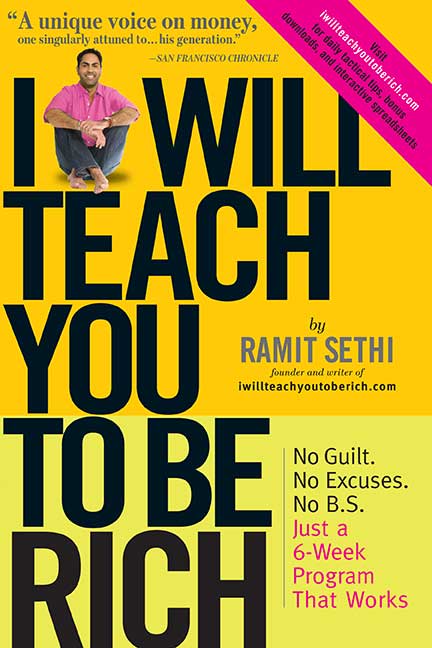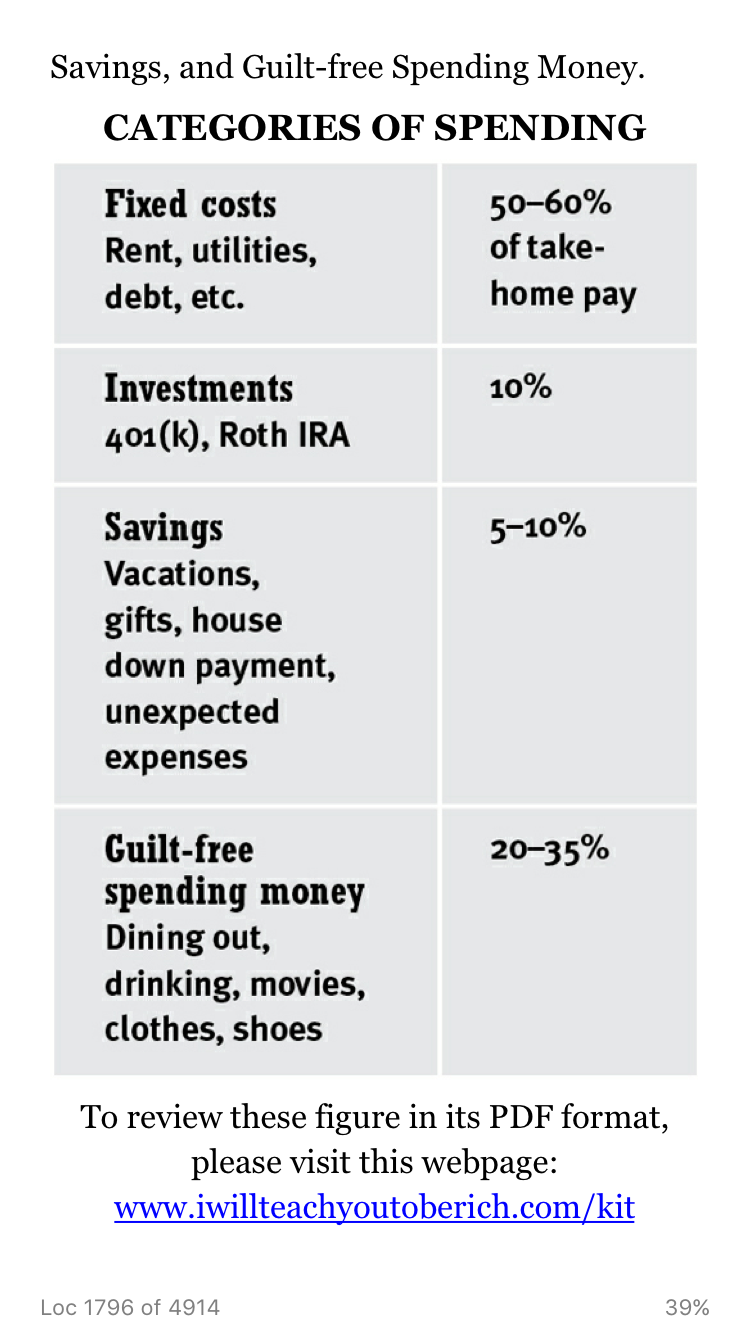I will teach you to be rich
This book is targeted towards people who are starting their careers in the United States. This book has a good breadth on financial topics but doesn’t go into depth on any of the topics. Some of the topics covered include - credit score, banking (checking and savings), 401(K), Roth IRA, how to manage your expenses, investments, buying a car, home etc. If any of the above topics sound new/interesting to you, chances are you’ll learn something from this book to get started and save a few bucks.

This blog post is my key learnings from the book I will teach you to be rich by Ramit Sethi.
##Key Learnings
In each of the learnings, I’ve added a section called Action Item - something to take it forward besides reading the book/blog.
###Credit Score
Credit Score is based on the following 5 factors
-
35% Payment History (late payments hurt you)
-
30% credit utilization rate (credit bill/credit limit)
-
15% length of history
-
10% new credit
-
10% types of credit (loans, credit cards etc. variety is better)
Action Items
-
Setup automatic credit card payments (I actually didn’t know this!). For Bank Of America, you can setup automatic credit card payments in full here - https://choosedirectdebit.bankofamerica.com/ .
-
Increase your credit limit - This is related to the 2nd factor (credit utilization rate). Higher your credit limit, the lower your utilization rate.
###Bank Accounts
The big banks like Bank of America and Wells Fargo have a very low interest on the savings account (for example, Bank of America has a 0.01% APY) and 0% interest on the checkings account.
Action Items
-
Open a High Yield Savings Account - Do some research online and find out the top yielding savings account. At the time of writing, I’ve found some banks to give close to 1% interest. I’ve been using Barclays Savings account.
-
Setup automatic monthly transfers.
###Managing your expenses

As they say, ‘If you cannot measure it, you can’t manage it.’ This is one of the templates mentioned in the book. The most important thing that I like about the above template is that it allocates 20% to 35% towards guilt-free spending on things you love (read skis, shoes, sports lessons etc.) :) Feel free to modify the template to suit your needs.
Action Items
- Track your spendings - There are many apps/tools to track your monthly expenses. I’ve been using saver - an app for iPhone.
###Investment

The Swensen model of Asset Allocation-
-
30% Domestic Equities - Total Market Index (VTSMX)
-
15% Developed world international equities - Total International Stock Index (VGTSX)
-
20% Real Estate Funds - REIT Index (VGSIX)
-
15% Treasury Inflation protected securities - TIPS Bond Index (VIPSX)
-
15% Government bonds - US Treasury Bond Index (VFISX) + Intermediate-Term Treasury Fund (VFITX) + Long-Term Treasury Fund (VUSTX)
-
5% Emerging Market Equities - VEIEX
Action Items
-
Enroll in 401(K) - atleast whatever your employer matches.
-
Enroll in Roth IRA if you’re eligible.
-
Open a personal investment account (I use Vanguard) and start investing :)
As you can tell, none of this is cool or sexy but helpes you save a lot of money in the long term. The title is cheesy but I promise the content is much better :)
Kaushik Rangadurai
Code. Learn. Explore
